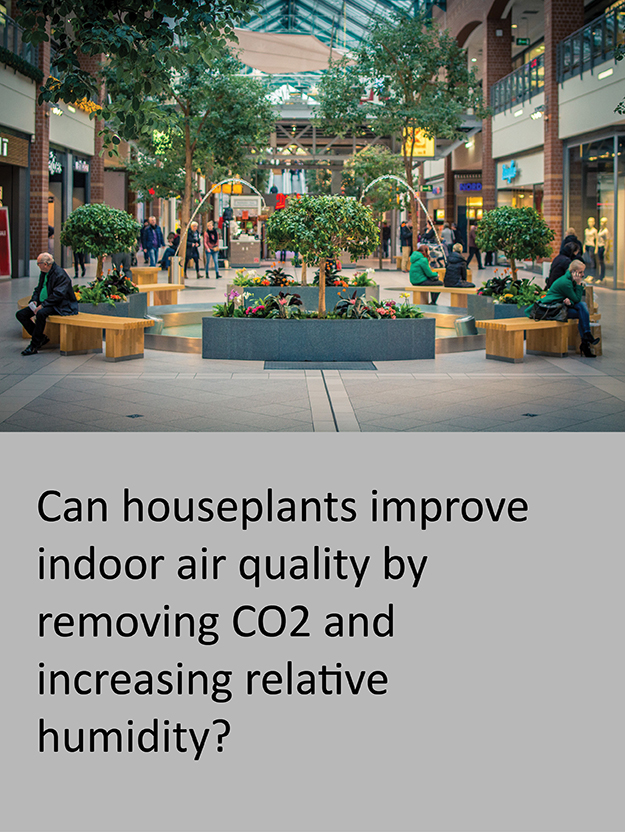Can Houseplants Improve Indoor Air Quality…

High indoor CO2 concentrations and low relative humidity (RH) create an array of well-documented human health issues. Therefore, assessing houseplants’ potential as a low-cost approach to CO2 removal and increasing RH is important. We inves- tigated how environmental factors such as ‘dry’ (< 0.20 m3 of water per m3 of substrate, m3 m−3) or ‘wet’ (> 0.30 m3 m−3) growing substrates, and indoor light levels (‘low’ 10 μmol m−2 s−1, ‘high’ 50 μmol m−2 s−1, and ‘very high’ 300 μmol m−2 s−1) influence the plants’ net CO2 assimilation (‘A’) and water vapour loss. Seven common houseplant taxa—representing a variety of leaf types and sizes—were studied for their ability to assimilate CO2 across a range of indoor light levels. Additionally, to assess the plants’ potential contribution to RH increase, the plants’ evapo-transpiration (ET) was measured. At typical ‘low’ indoor light levels, ‘A’ rates were generally low (< 3.9 mg h−1). Differences between ‘dry’ and ‘wet’ plants at typical indoor light levels were negligible in terms of room-level impact. Light compensation points (i.e. the light level where the CO2 assimilation equals zero) were in the typical indoor light range (1–50 μmol m−2 s−1) only for two studied Spathiphyllum wallisii cultivars and Hedera helix; these plants would thus provide the best CO2 removal indoors. Additionally, increasing indoor light levels to 300 μmol m−2 s−1 would, in most species, significantly increase their potential to assimilate CO2. Species which assimilated the most CO2 also contributed most to increasing RH.





